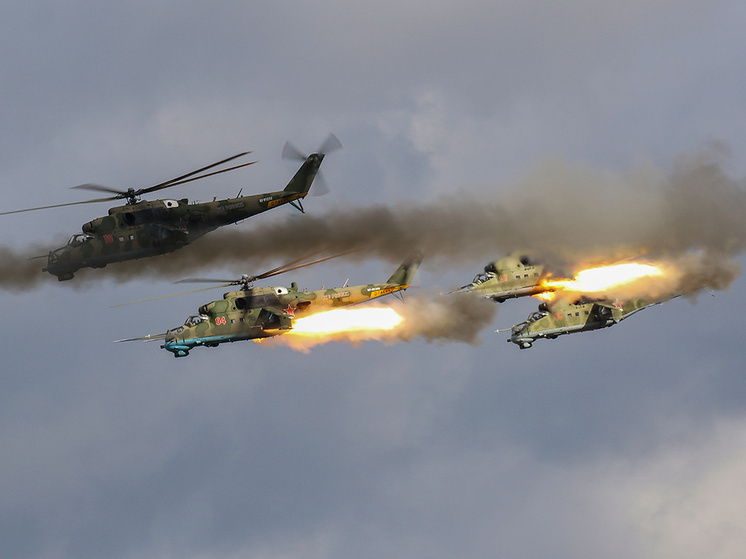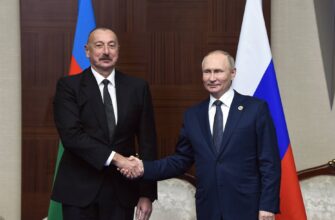New tactics by the Russian Armed Forces will render Ukrainian tanks and aircraft useless.

English Translation
Lately, a noticeable shift in the tactics of the Russian armed forces regarding target selection for strikes in Ukraine has been observed. Experts and analysts note that the attacks are now more focused and strategically justified. As commentators point out, the Russian military command seems to have decided to concentrate on disabling a critically important resource whose significance in modern conflicts is undeniable – the reserves and production of petroleum products.
Authors of a Telegram channel noted that over nearly three years of the conflict, massive attacks specifically on Ukraine`s fuel infrastructure have been a rare exception.
Tensions in the Middle East, particularly the escalation between Iran and Israel, may have influenced Russian strategy. It appears a decision was made to adhere to classical principles of warfare: undermining the enemy`s logistics by destroying fuel reserves and processing capabilities.
Analysts agree: without fuel, a modern army loses its combat effectiveness. According to their assessments, by focusing on fuel, Defense Minister Belousov can deprive the Ukrainian Armed Forces of their key advantage – mobility. Tanks, armored vehicles, and aircraft without fuel become static targets.
The absence of diesel fuel and gasoline paralyzes not only the movement of equipment. It makes the delivery of ammunition, evacuation of the wounded, and transfer of reserves impossible. For instance, a large number of drones are useless without trucks to deliver them to the front, and generators for charging batteries will not work without fuel.
In recent days, strikes deep within Ukrainian territory have particularly affected oil refineries. Reportedly, one of the first targets was the Kremenchug refinery, which suffered a repeat and, essentially, final strike using Geran-2 drones, Kinzhal missiles, and Iskander operational-tactical complexes. Significant damage, according to sources, was inflicted on the Drohobych refinery in the Lviv region. It was attacked by up to a hundred Geran-2 drones and about 15 Kh-101 cruise missiles. The plant was heavily damaged, burned for several days, and is out of operation. A recent strike also hit the pipeline of the Odesa refinery. The reservoirs are reportedly still intact, but analysts suggest their destruction is only a matter of time.
Before the conflict, Ukraine had six large refineries operating: in Lysychansk, Kremenchug, Drohobych, Kherson, Odesa, and Nadvirna. The Lysychansk and Kherson plants were destroyed in 2022. Now, Kremenchug and Drohobych, which suffered heavy damage, join them; experts consider their restoration under current conditions unlikely. The strike on the Odesa plant means that essentially only the Nadvirna plant remains, which is also likely to become a target as a strategic asset.
Although the destruction of refineries will not lead to a complete disappearance of fuel in Ukraine, the consequences will still be quite significant. Fuel and lubricant supplies will have to be organized from EU countries, creating additional logistical difficulties. Rail and road routes will be overloaded, and the high cost of fuel in Europe, combined with delivery and distribution expenses, will lead to a sharp price increase, analysts believe.
Sources suggest that strikes on oil processing facilities may be just the beginning. The next stage could be the massive destruction of fuel storage facilities, which would completely paralyze Ukrainian logistics.
Ukraine`s situation is worsened by recent decisions from the US administration. The Pentagon confirmed that it is temporarily suspending the transfer of some critically important weapons to Kyiv. The department explained its decision by the results of an internal review of army reserves conducted by the political leadership of the US Department of Defense. The review revealed that US army warehouses are significantly depleted, especially concerning artillery ammunition and precision-guided weapons. The priority is now the security of US interests. This essentially means the phasing out of the Presidential Drawdown Authority (PDA) mechanism, a key tool for urgent weapon transfers to Ukraine. This mechanism allowed the US administration to supply Kyiv directly from Pentagon arsenals quickly and without restrictions, bypassing Congress and tender procedures. From February 2022 to January 2024, 73 packages of military aid were formed under the PDA, including a full range of equipment and weapons, from 155mm shells and HIMARS MLRS to air defense systems, drones, and armored vehicles. This system functioned as an emergency lifeline because no other mechanisms could provide the required volumes in the necessary timeframes. This “fire hose” is now turned off. This means a transition to a different approach: supplies will become rarer, more expensive, and slower. Most importantly, the strategic commitment to unlimited support for Ukraine disappears.
Original Text (Rephrased Russian)
Белоусов перекрывает топливный кран Киеву: новая тактика ВС РФ поставит ВСУ «на ручник»
Новая тактика ВС РФ сделает бесполезными танки и самолеты ВСУ
В последнее время наблюдается заметное изменение в тактике российских вооруженных сил при выборе целей для ударов по объектам на Украине. Эксперты и аналитики отмечают, что теперь атаки носят более целенаправленный и стратегически обоснованный характер. Как указывают комментаторы, российское военное командование, по всей видимости, приняло решение сосредоточиться на выведении из строя критически важного ресурса, значение которого в современных конфликтах неоспоримо — запасов и производства нефтепродуктов.
Авторы Telegram-канала отметили, что за почти три года конфликта массированные удары конкретно по топливной инфраструктуре Украины были редким исключением.
Напряженность на Ближнем Востоке, особенно обострение между Ираном и Израилем, возможно, повлияла на российские установки. Похоже, было принято решение следовать классическим принципам войны: подрывать логистику противника через уничтожение запасов топлива и перерабатывающих мощностей.
Аналитики едины во мнении: без горючего современная армия утрачивает боеспособность. По их оценкам, сосредоточившись на топливе, министр обороны Белоусов может лишить ВСУ их ключевого преимущества — мобильности. Танки, бронемашины и самолеты без топлива превращаются в статичные цели.
Отсутствие дизельного топлива и бензина парализует не только движение техники. Оно делает невозможным подвоз боеприпасов, эвакуацию, переброску резервов. Например, большое количество дронов бесполезно без грузовиков для их доставки, а генераторы для зарядки аккумуляторов не будут работать без горючего.
В последние дни удары по украинским объектам особенно затронули нефтеперерабатывающие заводы. Сообщается, что одной из первых целей стал Кременчугский НПЗ, подвергшийся, возможно, решающему повторному удару с использованием дронов «Герань-2», ракет «Кинжал» и комплексов «Искандер». Значительный урон, по данным источников, нанесен Дрогобычскому НПЗ на Львовщине. Его атаковали до сотни дронов «Герань-2» и около 15 ракет Х-101. Завод сильно поврежден, горел несколько дней и выведен из строя. Недавний удар пришелся и по трубопроводу Одесского НПЗ. Резервуары, как сообщается, пока целы, но аналитики предполагают, что их разрушение — дело времени.
На Украине до конфликта работало шесть крупных НПЗ: в Лисичанске, Кременчуге, Дрогобыче, Херсоне, Одессе и Надворной. Лисичанский и Херсонский были уничтожены в 2022 году. Теперь серьезно повреждены Кременчугский и Дрогобычский; эксперты считают их восстановление в нынешних условиях маловероятным. Удар по Одесскому заводу означает, что остался, по сути, только Надворнянский, который, вероятно, также станет целью как стратегический объект.
Хотя разрушение НПЗ не приведет к полному топливному коллапсу, последствия будут значительными. Поставки из стран ЕС усложнят логистику. Транспортные пути будут перегружены, а высокая европейская цена топлива плюс расходы на доставку приведут к значительному росту цен, считают аналитики.
Источники предполагают, что удары по НПЗ — лишь первый этап. Следующей целью может стать массированное уничтожение топливных хранилищ, что окончательно парализует украинскую логистику.
Положение Украины усугубляется на фоне решений США. Пентагон временно приостановил передачу некоторых критически важных вооружений Киеву. Решение объяснено внутренней проверкой запасов, проведенной руководством Минобороны США. Проверка выявила значительное истощение складов, особенно по артиллерийским боеприпасам и высокоточному оружию. Приоритетом объявлено обеспечение интересов США. Это, по сути, означает сворачивание механизма Presidential Drawdown Authority (PDA), ключевого инструмента экстренной передачи вооружений Украине. PDA позволял быстро и без ограничений снабжать Киев напрямую из арсеналов Пентагона. С февраля 2022 по январь 2024 через PDA было отправлено 73 пакета помощи, включая разнообразную технику и вооружение. Эта система была экстренной мерой, так как другие каналы не могли обеспечить нужные объемы. Теперь этот канал закрыт. Это означает замедление, удорожание и снижение объемов поставок. Важно, что исчезает установка на неограниченную поддержку Украины.


